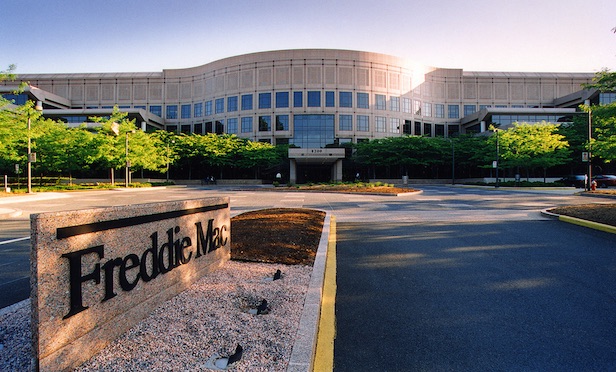
McLEAN, VA–Multifamily investing conditions grew stronger in the second quarter from the previous one, with some markets such as Seattle and Boston posing increases that exceeded historical averages by large margins. However on an annual basis the investment conditions decreased, according to Freddie Mac's Multifamily Apartment Investment Market Index (AIMI).
AIMI combines multifamily rental income growth, property price growth and mortgage rates to provide a single index that measures multifamily market investment conditions.
The gains in the second quarter were driven by several factors starting with positive net operating income (NOI) growth in all of the major markets that AIMI tracks plus a slight decline in Q2 for mortgage rates. This was an important change for the market — the first quarter had seen a significant increase in rates. Property price growth was mixed across metros, with six markets experiencing a contraction and nine — including the national average — seeing growth. Three cities — Chicago (whose AIMI growth rate was -12.4%), Los Angeles (-8.3%), and Phoenix (-10.0%) — all experienced double-digit growth over the past year.
Q2's drop in mortgage rates was a blip in an otherwise year-long period of rising mortgage rates, which jumped 24 basis points. Indeed, the main reason why the index declined year over year was the largely due to rising mortgage rates, according to Steve Guggenmos, vice president of Freddie Mac Multifamily Research and Modeling.
That said, for the past year there has been positive income growth in most markets except for New York (with an AIMI growth rate of -4.4%), Austin (-2.42%), and Houston (0.6%), which continued to absorb high levels of supply.

McLEAN, VA–Multifamily investing conditions grew stronger in the second quarter from the previous one, with some markets such as Seattle and Boston posing increases that exceeded historical averages by large margins. However on an annual basis the investment conditions decreased, according to
AIMI combines multifamily rental income growth, property price growth and mortgage rates to provide a single index that measures multifamily market investment conditions.
The gains in the second quarter were driven by several factors starting with positive net operating income (NOI) growth in all of the major markets that AIMI tracks plus a slight decline in Q2 for mortgage rates. This was an important change for the market — the first quarter had seen a significant increase in rates. Property price growth was mixed across metros, with six markets experiencing a contraction and nine — including the national average — seeing growth. Three cities — Chicago (whose AIMI growth rate was -12.4%), Los Angeles (-8.3%), and Phoenix (-10.0%) — all experienced double-digit growth over the past year.
Q2's drop in mortgage rates was a blip in an otherwise year-long period of rising mortgage rates, which jumped 24 basis points. Indeed, the main reason why the index declined year over year was the largely due to rising mortgage rates, according to Steve Guggenmos, vice president of
That said, for the past year there has been positive income growth in most markets except for
© 2025 ALM Global, LLC, All Rights Reserved. Request academic re-use from www.copyright.com. All other uses, submit a request to [email protected]. For more information visit Asset & Logo Licensing.








